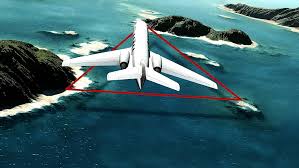Fresh water is an essential resource aboard any vessel, from small boats to massive ocean-going ships. Since carrying large volumes of potable water is impractical on long voyages, especially on commercial and naval ships, the solution lies in a remarkable piece of engineering known as the Fresh Water Generator (FWG). These machines produce fresh water from seawater, ensuring the crew has an uninterrupted supply for drinking, cooking, washing, and other vital purposes.
In this blog, we will explore the workings, importance, types, and maintenance of fresh water generators, emphasizing their indispensable role in marine operations.
What Is a Fresh Water Generator?
A Fresh Water Generator, also referred to as a desalinator or desalination unit, is a device used on ships to convert seawater into fresh, potable water. The process involves removing dissolved salts and impurities from seawater, making it safe for human consumption and utility purposes.
Ships typically generate fresh water using one of two main methods:
-
Distillation (Evaporation and Condensation)
-
Reverse Osmosis (RO)
Each method has its own advantages, depending on the size of the ship, energy availability, and specific water needs.
Why Is Fresh Water Generation Essential on Ships?
Carrying sufficient fresh water for long voyages is neither economical nor practical due to space constraints and weight limitations. That’s where a fresh water generator becomes crucial.
Here are several reasons why FWGs are vital:
-
Self-Sufficiency at Sea: Ships may spend weeks or months at sea. FWGs ensure an uninterrupted supply of drinking water.
-
Space and Weight Optimization: Generating water on board reduces the need to carry large water tanks, saving valuable cargo space.
-
Hygiene and Sanitation: Fresh water is critical for showers, laundry, cooking, and cleaning, maintaining health and hygiene onboard.
-
Engine Cooling and Boiler Operations: On some ships, distilled water is also used in engine room systems and boilers.
-
Environmental Responsibility: Reducing plastic bottled water use helps minimize pollution and waste.
How Does a Fresh Water Generator Work?
1. Distillation-Based Fresh Water Generator
This is the most commonly used method on large commercial vessels. The process includes:
-
Heating Seawater: The ship’s engine cooling system provides waste heat, which is used to heat seawater in an evaporator chamber.
-
Evaporation: As seawater heats up under low pressure (vacuum), it evaporates. The vacuum allows water to boil at a lower temperature, usually around 40–60°C, saving energy.
-
Condensation: The steam then passes through a condenser where cold seawater (used as a cooling medium) cools the vapor, turning it back into distilled water.
-
Salinity Monitoring and Discharge: A salinometer checks the purity of the water. If the salinity is within acceptable limits (usually below 10 ppm), it is stored in fresh water tanks. If not, it is discharged overboard.
This method is energy-efficient because it utilizes waste heat from the ship’s engines.
2. Reverse Osmosis (RO) System
Reverse osmosis is a membrane-based filtration process and is becoming increasingly popular, especially on smaller vessels and yachts.
-
High-Pressure Pumping: Seawater is pumped through high-pressure pumps (around 800–1000 psi).
-
Filtration: The water passes through semi-permeable membranes. These membranes allow water molecules to pass but block salt and other impurities.
-
Post-Treatment: The filtered fresh water may go through additional carbon filters or UV treatment to ensure safety and improve taste.
RO systems are more compact but require significant electrical power and routine maintenance, especially membrane cleaning or replacement.
Types of Fresh Water Generators
-
Vacuum Evaporator Type:
-
Uses waste heat.
-
Energy-efficient.
-
Most common in commercial ships.
-
Low operating cost.
-
-
RO (Reverse Osmosis) Systems:
-
Best for small vessels and yachts.
-
Higher operating cost due to energy needs.
-
Requires membrane care and pre-treatment.
-
-
Multi-Stage Flash (MSF) and Multi-Effect Distillation (MED):
-
Used on large industrial ships or platforms.
-
Complex and suitable for high-capacity freshwater needs.
-
Components of a Fresh Water Generator
Here are the essential components typically found in a marine FWG system:
-
Evaporator/Condenser: For heating and condensing water vapor.
-
Ejector Pump: Maintains vacuum pressure.
-
Brine Ejector: Removes concentrated saltwater (brine).
-
Salinometer: Measures salinity of produced water.
-
Control Panel: Monitors and controls the operation.
-
Fresh Water Pump: Transfers produced water to storage tanks.
-
Feed Water Pump: Draws seawater into the system.
Maintenance and Operational Considerations
Proper operation and routine maintenance of fresh water generators are crucial to ensure reliability and longevity:
-
Regular Cleaning: Evaporator tubes and RO membranes should be cleaned periodically to remove scale or biofouling.
-
Monitor Salinity: Always keep an eye on salinometer readings to avoid using contaminated water.
-
Check for Leaks: Especially in RO systems where high pressure is involved.
-
Lubrication and Pump Servicing: Ensure pumps are operating efficiently with proper lubrication and servicing.
-
Use of Anti-Scaling Chemicals: Prevent scaling inside evaporators or on membranes.
Environmental and Technological Trends
Modern ships are moving toward greener technologies. Fresh water generators help reduce dependency on plastic bottles and reduce emissions by using waste heat.
Additionally, technological improvements include:
-
Smart FWGs with automated monitoring and diagnostics.
-
Energy recovery devices in RO systems.
-
Hybrid systems combining distillation and membrane filtration.
Conclusion
The fresh water generator is a silent hero aboard ships, working tirelessly to provide clean, drinkable water in the middle of the vast ocean. Its function is not only about survival—it’s about maintaining health, safety, and operational efficiency for the crew and the vessel.
As technology evolves and sustainability becomes a core concern for the maritime industry, fresh water generation systems are becoming more advanced, energy-efficient, and environmentally friendly. Whether it’s through distillation or reverse osmosis, one thing is clear—without fresh water generators, life at sea would be far more challenging and less sustainable.
